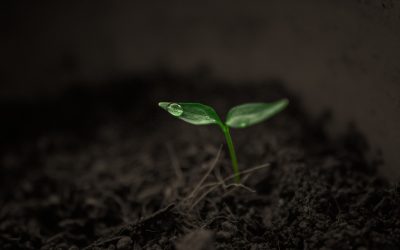In healthy trees, roots radiate outward from the base, spreading horizontally through the top several inches of ground to achieve the best mix of essential nutrients, water, and oxygen. If unimpeded by soil limitations or other physical barriers, a tree’s roots can extend outward well beyond the reach of the longest branches. Because these roots are unseen and under foot they tend to be disregarded or not considered during construction activities or other events where heavy loads are placed over the root zone. A single pass over the root zone by a large construction vehicle such as a dump truck, or an excavator, but also multiple passes with lighter vehicles, and temporary storage of construction supplies and equipment over a tree’s root zone has been shown to cause compaction of soil and consequent root decline.
Compacted soils lack air space and the structure needed to support roots and provide the preferred balance of water and oxygen. Trees suffering under conditions of chronic and acute soil compaction can become drought stressed and prone to secondary pest outbreaks. At Good’s Tree Care we have several tools that work to mitigate the damaged caused by soil compaction. They include:
- Radial trenching: Employing the Air Spade™ compacted soils are displaced in a series of trenches several inches wide and deep radiating out from the base of the tree. The trenches are then refilled with a healthy soil medium amended with leaf mold compost. Reworked root zones are then top dressed with a bark mulch again to improve positive root environment.
- Soil injection of Root Stimulant: Spring and/ or fall soil injection of solution based root stimulants can be applied throughout the root zone. Root stimulant soil injections offer three positive outcomes to counter compaction: (1) the product itself contains beneficial soil microorganisms and organic matter that works to improve soil ecology, (2) the process of injecting the solution into the root zone creates air spaces that work to relieve compaction, and (3) the application is water based and provides an opportunity to systematically irrigate the tree.
- Prophylactic systemic insecticidal application: Many tree species when drought stressed become prone to secondary insect pest infestations that ultimately result in the decline and death of impacted trees. Depending on the tree species, the insect pest, and the time of year encountered, we have a few options to suppress such pests, providing the tree the time it needs to recover from the primary issue it was suffering from. These options include systemic and more traditional bark spray applications.
- Cambistat Tree Growth Regulator Application: Tree growth regulators have been shown to be effective tools to counter the effects of soil compaction and tree decline initiated from a suite of causal factors. The product works by suppressing shoot extension by 30-70% over a period of three years. Because the tree is not investing as much to grow larger, there tends to be an energy surplus that can be devoted to more healthful tree functions such as fibrous root production, and the development of smaller leaves with higher concentrations of chlorophyll and a thicker cuticle improving drought tolerance.
pH and Nutrient Availability
pH is the measure of acidity/ alkalinity in the soil. All life forms are adapted to perform best when they are working within a narrow range on the pH scale. Tree species in nature have struck a balance over millennia and we tend to find certain tree species growing in specific environments based on pH and other site factors for optimum health and longevity.
In our developed landscape many of those long standing preferences are disregarded. Trees are installed in degraded soils with variable pH affected by hardscape infrastructure and repeated disturbance. Additionally, we import tree species into our developed landscapes that are not adapted or well suited to landscape soil conditions. pH is a major component of soil chemistry. When pH level falls outside of the narrow range preferred by specific trees, some essential nutrients become unavailable.
There are several conditions that can present in trees as a result of nutrient deficiencies caused by high and low pH. The most common of these is interveinal chlorosis. This condition results in in the yellowing of leaves. This off color impacts the leaves ability to absorb sunlight through photosynthesis and convert that energy into plant food. Over time this condition can cause the decline of plants. We have treatments in our tool kit that can suppress chlorosis, develop greener leaves, and improve tree health. Please contact us if you think that your tree is suffering from chlorosis.
Soil and Organic Matter
Trees that grow well in our region are long adapted to growing in extensive forest communities. In forests, trees can expect a steady input of nutrients every year from deposition of falling leaves, decaying wood, and decomposing animal carcasses. In our developed landscapes, all of these traditional inputs are discouraged or cleaned up before the nutrients can get to the roots of trees. Further, much of our landscape is covered in turf. So not only are trees deficient of inputs, they have also have to compete for nutrients and water with grass. When you put it in this perspective you can better appreciate why trees struggle at times to make a living.
Proper mulching practices and annual or otherwise regular inputs of root stimulants can work to replace nutrients in our landscape soil and make for healthier trees. This work can range from minor adjustments to extensive soil remediation efforts with long-term management plans. Ask us how we can help you make your trees feel more at home in your landscape.


